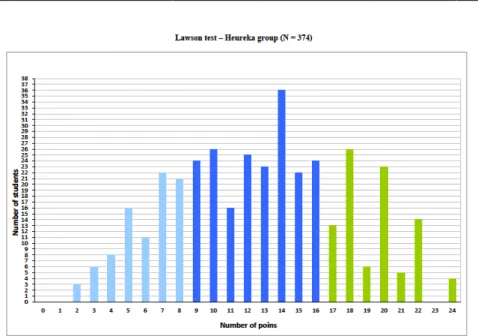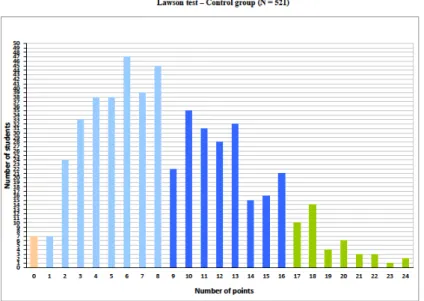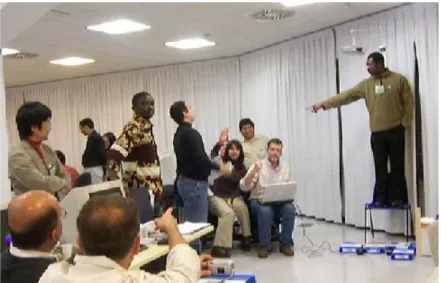The overall focus of the conference was Active Learning – in a changing world of new technologies. Most importantly, however, we need to rethink the role of the instructor in the classroom.
Introduction
Interactive curricula are successful in helping students develop conceptual understanding of physical principles and problem solving. We can help students develop these “habits of mind” by engaging them purposefully and systematically in processes that mirror the processes physicists engage in when they build and use knowledge.
Scientific abilities
The diagram contains no dot, v-arrow, or delta v-arrow errors and clearly matches the motion of the object. Rubrics for several sub-skills of the ability to design an experiment to investigate a phenomenon.
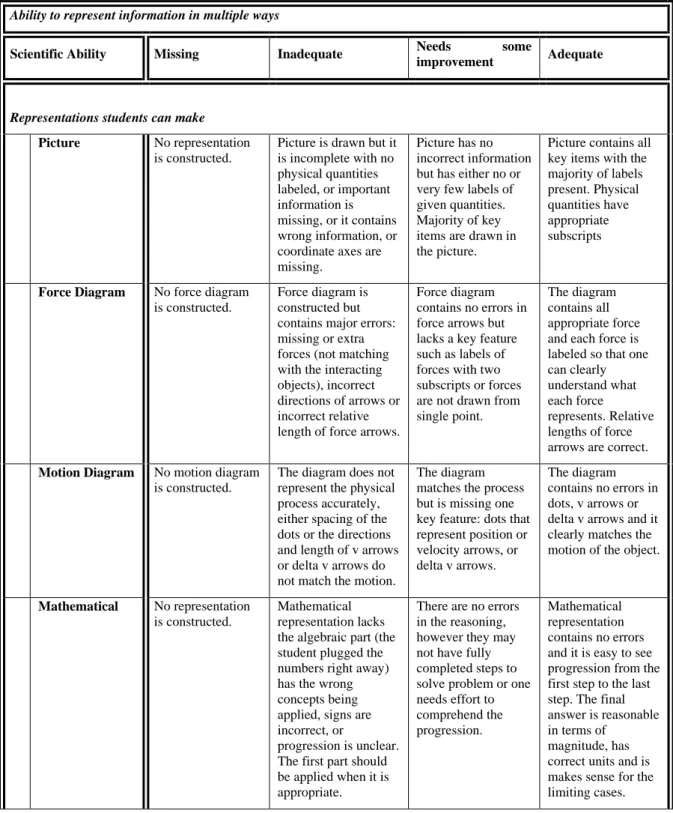
Investigative Science Learning Environment
Testing involves first designing a new experiment whose outcome they can predict using their explanation, second conducting the experiment, and third comparing the predictions with the results of the test experiment. This deliberate testing of proposed explanations using hypothetico-deductive reasoning is one of the most important features of ISLE, which in turn directly reflects common reasoning in science and, in particular, in experimental physics.
Developing Scientific Abilities in an ISLE-based course
Study of multiple representations
An introductory physics textbook using the ISLE approach, with an auxiliary workbook for students and an instructor's manual for teachers, has recently been published [15]. We also found that students who draw diagrams correctly (grades 2 and 3 in the free body/force diagram section) are significantly more successful in obtaining the correct answer to the task.
Study of student acquisition of scientific abilities
We found that at the beginning of the semester most students scored 0 and 1 on the rubrics and as the semester progressed the scores increased. The real changes come at the end of the semester when they not only know what to do, but how to do it.
Transfer of scientific abilities
The research questions we answered in the reported studies were: How long does it take for the majority of the students to develop different scientific abilities. Science Ability Rubrics: Physics Transfer Task: Reading the lab reports revealed the characteristics that made a difference in the performance of two groups.
Discussion
There were significant differences in the lab reports of design students and non-design students. We found very similar results for the biology task, design group students demonstrated the transfer of acquired scientific skills significantly better than non-design students.
TESTING EXPERIMENT: CURRENT-VOLTAGE DEPENDENCE
Think about which mathematical functions fit your data (Excel has functions that let you examine how well different functions fit your data). e) Find the EASIEST math function that fits your data.
WHY DID WE DO THIS LAB?
7] Czujko R.: (1997) The Physics Bachelor's Degree as a Passport to the Workplace: Recent Research Results in the Changing Role of Physics Departments in the Modern. Pearson, 2013; Etkina, E., Gentile, M., Van Heuvelen, A., The Physics Active Learning Guide, San Francisco, CA: Pearson, 2013 (Second edition); Etkina E., Brookes D., Van Heuvelen A.: Instructor's Guide for College Physics.
Brief introduction to elementary particles and their interactions Specific units in particle physics
We see that with increasing momentum an ultra-relativistic particle approaches the speed of light. An increase in the momentum of ultra-relativistic particle will lead to only very small change of the particle velocity.
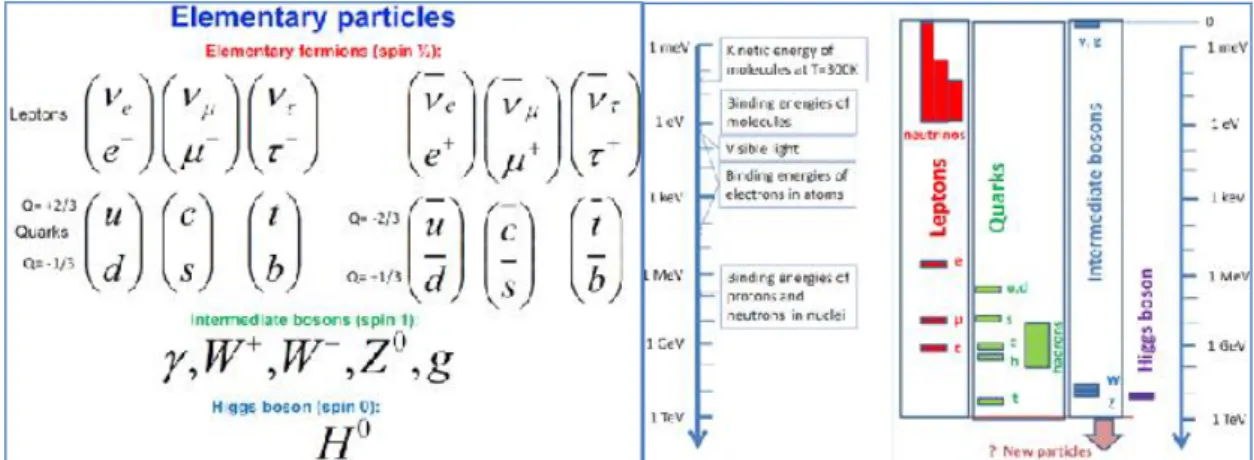
The discovery of a Higgs boson Large Hadron Collider (LHC)
Theory does not predict the value of the Higgs boson mass, it must be measured experimentally. Theory predicts that the probability of the Higgs boson decaying to lepton pairs (generally to all fermion pairs) is proportional to the squares of lepton (fermion) masses.

Neutrino oscillations
A few personal words (that you can skip)
Before describing the Heureka Project I would like to say something about my work, because the whole project reflects my long experience from my work at the school. When I talk to my students at the faculty, I can describe to them some real situations at school, give them examples from my work at school.
Formation of The Heureka Project
I am a lecturer in the Department of Physical Education at the Faculty of Mathematics and Physics, Charles University in Prague.
The first main part of The Heureka Project – work with children The two following examples provide a good illustration of our approach
- Example of the methodological sequence – Measurement of time
- Comments on the methodological sequence Measurement of time
- Example of a written test My second example is a test
- Comments on the test
- The basic principles of the Heureka approach
- Is there some real impact of the Heureka approach on the thinking abilities of students?
I don't tell kids "the formula"; I just tell them that the graph is made using a mathematical expression. The age of my students and other students in ”the Heureka group” was 15-16 years old, the age of students in the control group was 15-18 years old.
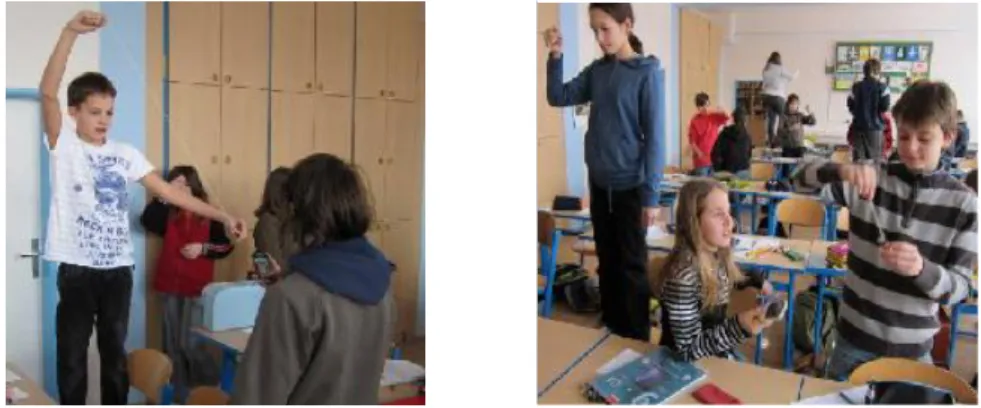
The second main part of The Heureka Project – work with teachers and future teachers
- Seminars for new participants
- The Heureka Workshops
The teachers called this course "teachers' kindergarten", because we really start our work from the first lesson to the sixth grade, where children also start learning physics. We check these basic ideas using some conceptual problems in the test at the beginning of the first workshop. First situation - the pendulum is at rest, so the net force F = 0 (Newton's first law).
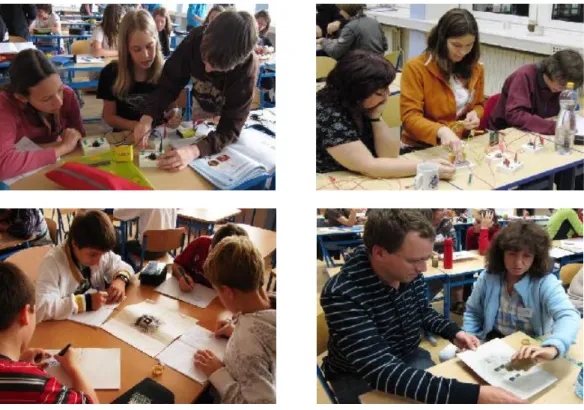
Bonus – weighing using a piece of paper
The Heureka Workshops” is an annual conference prepared for both physics educators and students – prospective physics educators attending one of The Heureka Project seminars, as well as guests. It takes place in the high school of a small town of Nachod in East Bohemia, where one of the active teachers of The Heureka Project works. We are happy that guests from abroad come to Nachod every year, despite the fact that the conference is held in Czech and the living conditions are far from luxurious.
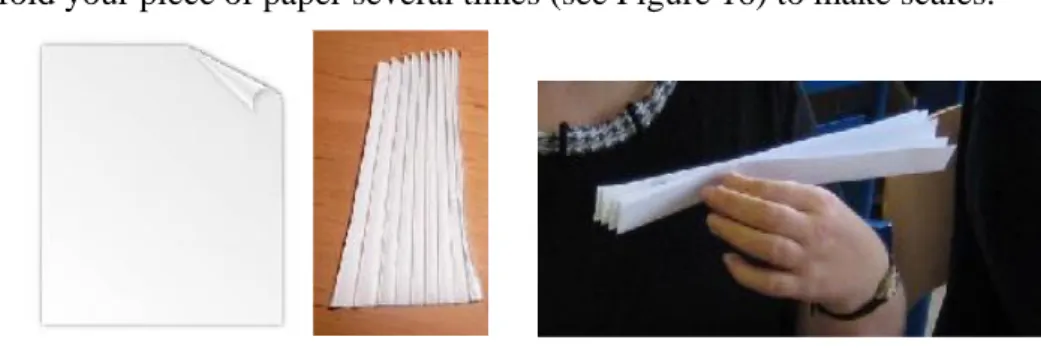
Conclusion
Author Pratibha Jolly as Chair of IUPAP Commission 14 – International Commission on Physics Education (ICPE) – and Priscilla Laws (Dickinson College, USA) were invited to chair the Physics Education segment. The ultimate success of the Physware initiative will depend on the circle of influence growing along three important dimensions, viz. i) scope and depth of content – it is important that subsequent Physware workshops cover more and more physics topics to have a comprehensive impact. ii) the quality of the content – it is important that each Physware workshop is iteratively refined taking into account participant feedback and further fine-tuned to be compatible with local needs and contexts. iii) the extent of educational outreach efforts – it is important that a significant number of educators in each region are exposed to the new pedagogy, receive appropriate training and take on the role of regional leader or change agent to provide opportunities for more and more educators. Regardless of how "good" the teacher is, typical students in a traditionally taught course learn by rote, rote facts and problem-solving recipes; they do not achieve a true understanding.

In the first step, through prediction task about how a physical phenomenon or its simple modification will work, student personally activates and formulates his or her alternative ideas
With the help of computers, students in class collect data about phenomena and make sense of them. Student-Centered Active Learning Environment for Collegiate Physics, or SCALE-UP, by Robert Beichner of North Carolina State University [36];. In the first step, the student personally activates and forms his alternative ideas through a prediction task about how a physical phenomenon or its simple modification will work.
The second step is observation and comparison between personal and group prediction and observation. In the case of well thought learning situation, the prediction and observation do
When personal predictions and justifications are formulated, then comes group discussion of those predictions and justifications, with the goal of reaching consensus, which means a group prediction and justification. It is important to tell students that everyone should keep personal prediction and justification, if not completely satisfied with different prediction and justification.
In the third step, students have a challenging task to explain the noted differences and to propose a change in the suppositions and reasoning their prediction was based on. The
The hydrostatic oil pressure on the surface of the water is greater than on the top surface of the can, and the pressure is transferred through the water, increasing the pressure on the bottom of the can. Of course, the most important part of the R phase is when students can reinforce, revise or rethink their original ideas or test, change or reinforce new ideas. Thinking, fast and slow” [44], describes (and provides research-based evidence of) facets of two different modes in which the human brain operates in answering questions and solving challenging problems:.
In the "pressure difference model", separation of the glass and balloon was not possible due to the reduced air pressure on the glass. Rather, it should be a basic element of institutional policy in the field of learning and teaching. Active learning – in a changing world of new technologies.” The focus on active learning means that the interest of education has shifted from "how to learn" to "how students learn". Therefore, active learning is a teaching and learning innovation and strongly linked to teacher education reform.

Active learning in undergraduate courses using physics by inquiry
Most of the participants were in the first year of a four-year teacher training program for primary schools. The results of the pre-test and the interview showed that the students have typical misconceptions such as "the battery provides a constant current" and "the current is used up." This is actually fair because we often say "This battery is done." From the discourse analysis, many students formulated a concept of conservation of electric current in a circuit.
Lesson study in a school with a local teachers’ community
The topic was "How is light reflected?" The aim was to investigate and understand how light is reflected. The teacher asked the students to apply the rule of spherical reflection to light reflection (stage 4, see figure 9). At the end of the lesson, the participants discussed the learning process of the students in small groups.
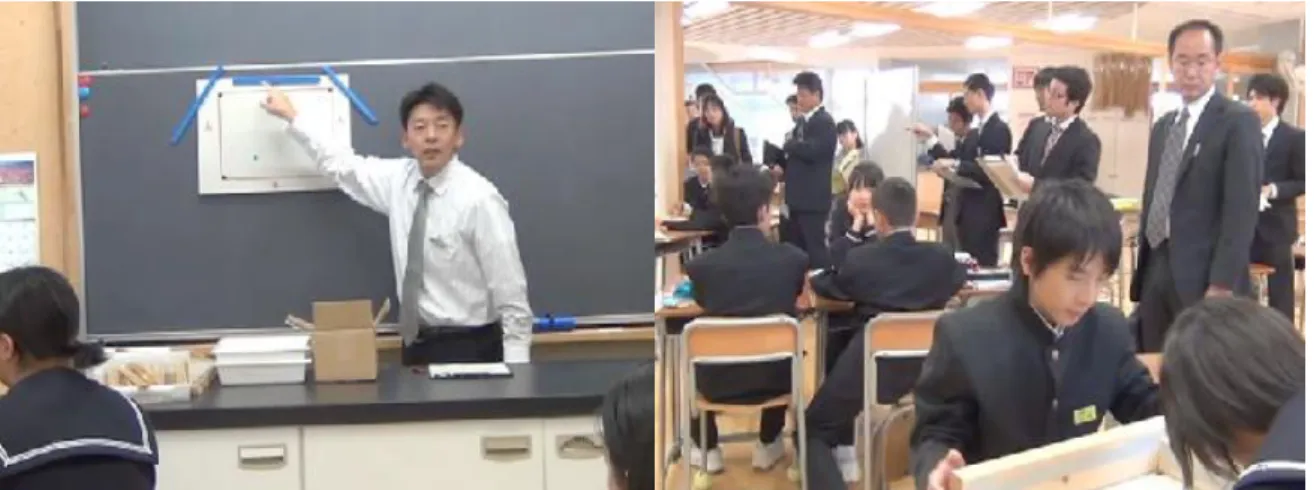
Practice and Reflection of an Intern — Yosuke’s story
That is, if academics with teacher-centered concepts, regardless of class size (quadrant A in the table above), could come together to focus on developing student-centered concepts and practices in small classes (i.e., transition A B), this would probably be successful as it appears to be a small conceptual shift. Ho A., Watkins D., Kelly M.: A conceptual change approach to improving teaching and learning: An evaluation of a Hong Kong staff development programme. The second part of the questionnaire is based on the CLES - Constructivist Learning Environment Survey questionnaire.
Five categories of conceptual problems emerged from participants' motivations and explanations, namely (a) solving the weight components; b) the concept of work; (c) applications of the work energy count; (d) concept of kinetic energy; Unable to solve problems related to solving 'the components of force or weight' - especially those related to motion on inclined planes/surfaces.
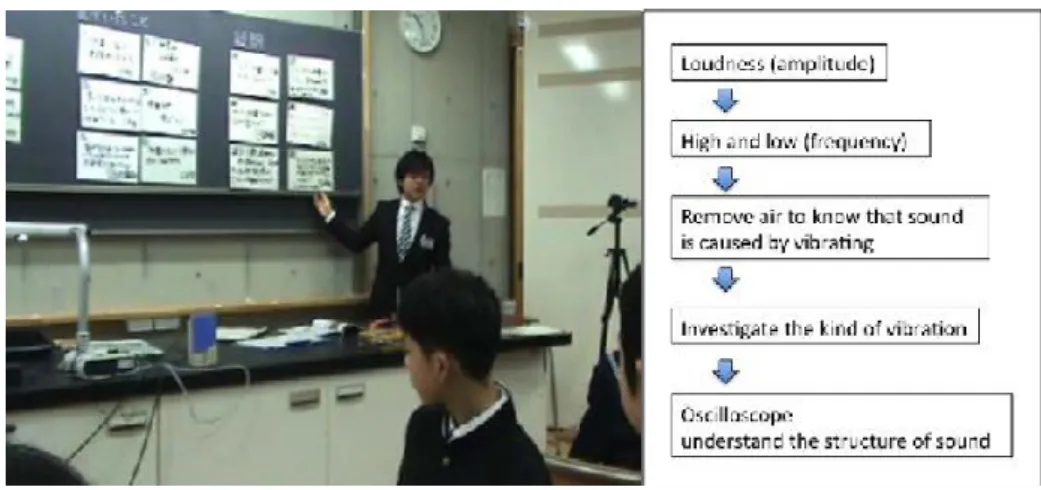
CD1): Resolving Components of Weight
What is the magnitude of the net force parallel to the slope experienced by the skier. The magnitude of the net force parallel to the incline experienced by the person is A. The kinetic energy of the box is made up of the force parallel to the surface.
Concept of Work
The box has friction to move down the slope until it lands on the ground, where the potential energy will be zero.
CD3): Application of Work-Energy Theorem
When the car engine started increasing speed from 0 to v, it also increased from v to 2v and from 2v to 3v, showing that the work done is 3 W and the difference is 1.”.
CD4): Kinetic Energy
He was also a disseminator of information; classroom procedures were teacher-centered; there was little or no interaction between students; and occasionally the teacher used questions to test the students' attention. Regarding the division of labor, the teacher prepared worksheets, TBM, gave input and feedback to the students. Regarding the OBE intervention, the teacher served as a learning facilitator; classroom procedures were student-centred and there was interaction between students and between students and the teacher – who sometimes used probing questions.
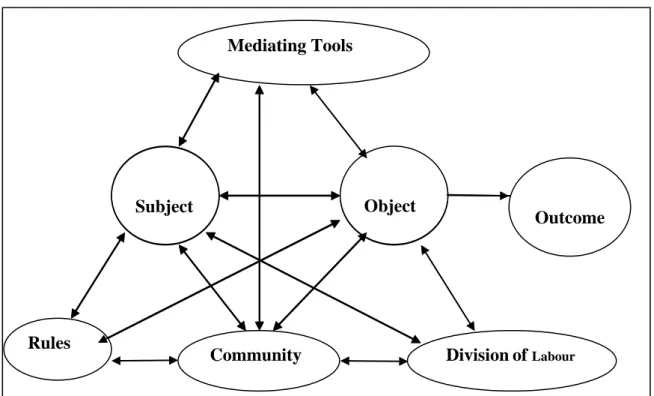
![Figure 1. Interest in (blue circles) and popularity of (red squares) the subject physics [10]](https://thumb-ap.123doks.com/thumbv2/123dok/10219059.0/41.892.299.615.760.1063/figure-blue-circles-popularity-red-squares-subject-physics.webp)
![Figure 13. Oscillation of the frame (red curve) and of the strings (blue curve) (adapted from [39], p.88)](https://thumb-ap.123doks.com/thumbv2/123dok/10219059.0/50.892.188.686.750.1068/figure-oscillation-frame-curve-strings-blue-curve-adapted.webp)
![Figure 15. Statistical distribution of the strength of the knee muscle of sports students (from [48])](https://thumb-ap.123doks.com/thumbv2/123dok/10219059.0/52.892.238.633.617.878/figure-statistical-distribution-strength-knee-muscle-sports-students.webp)
![Figure 16. World record of 100 m dash (men) (from [48]). Description in the text.](https://thumb-ap.123doks.com/thumbv2/123dok/10219059.0/53.892.240.675.113.467/figure-world-record-m-dash-men-description-text.webp)
